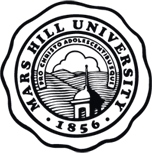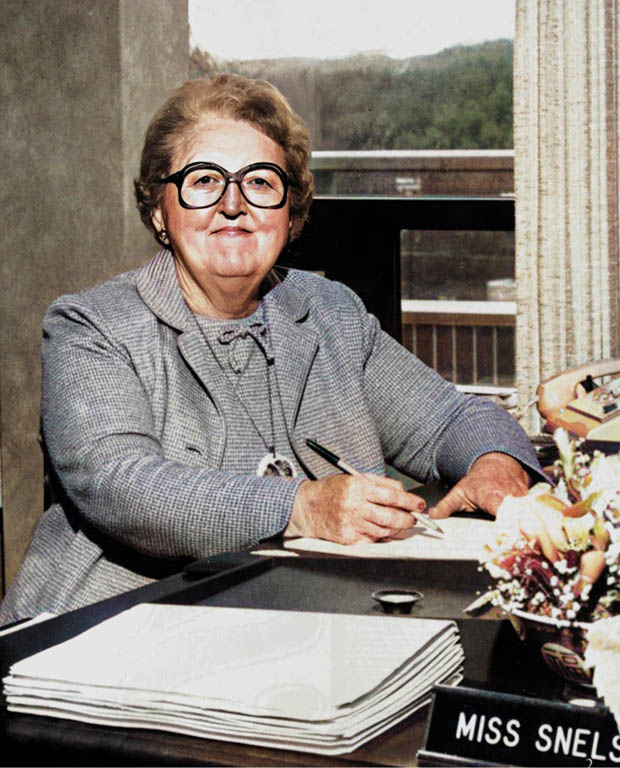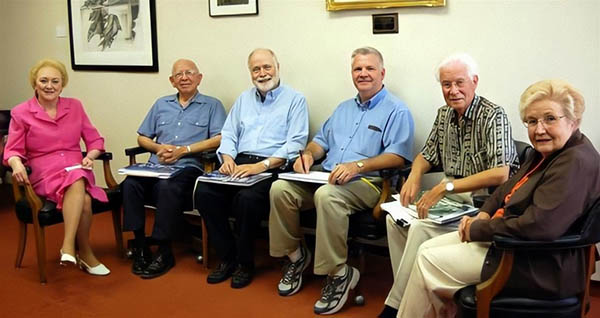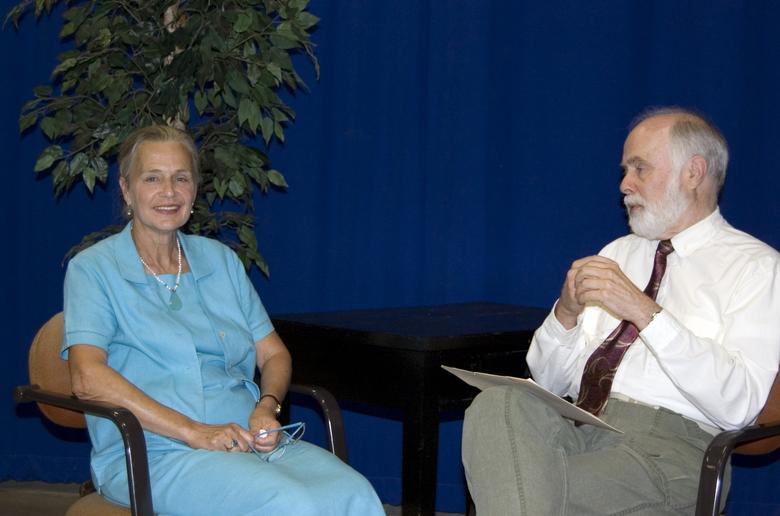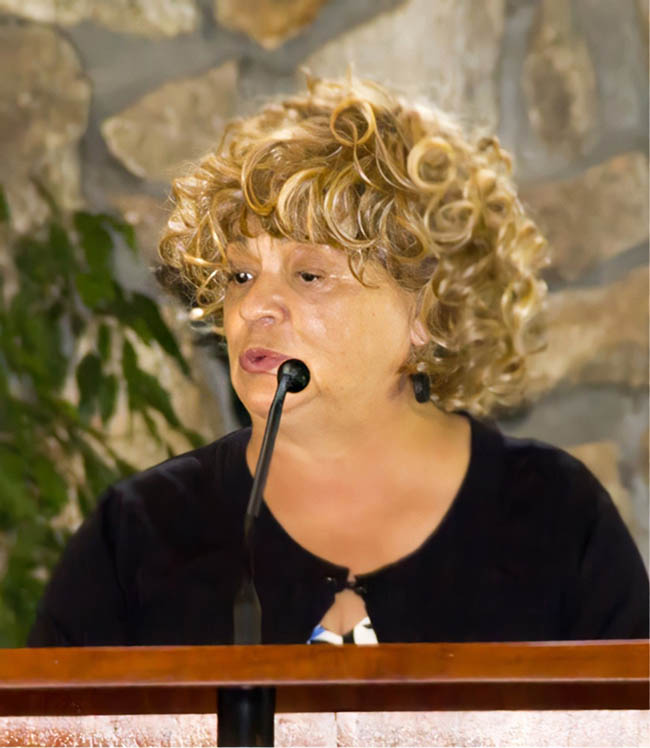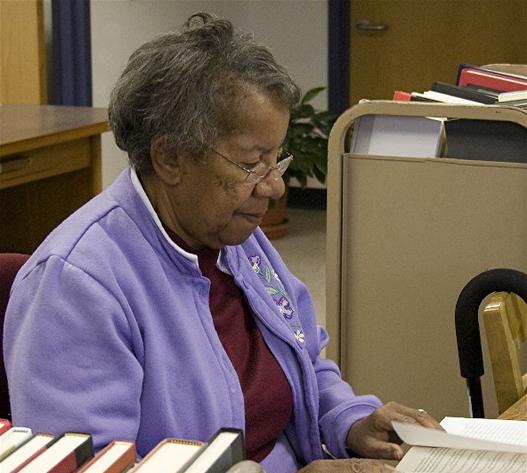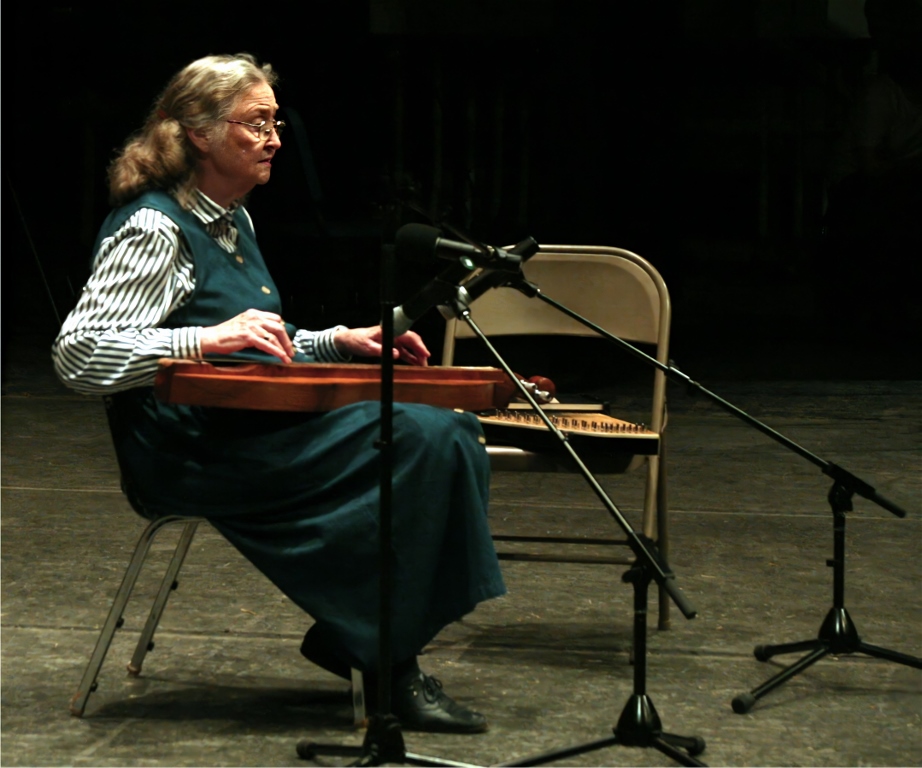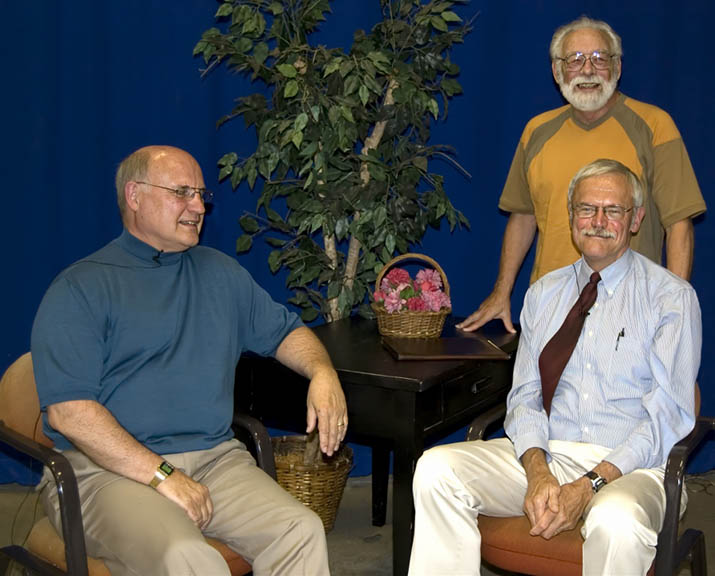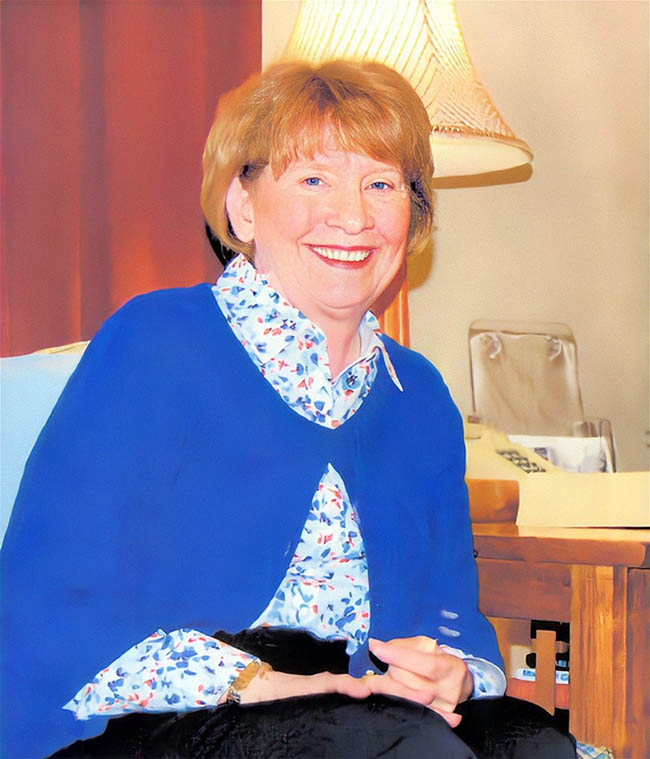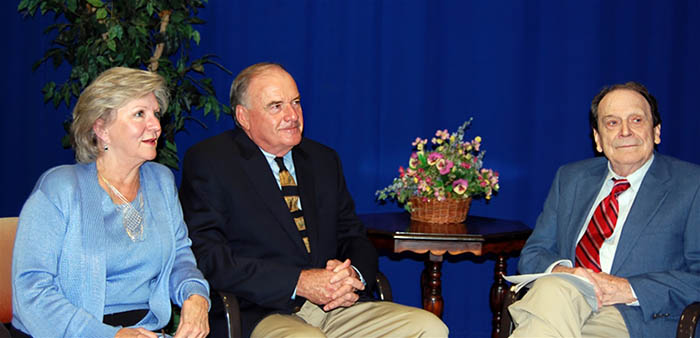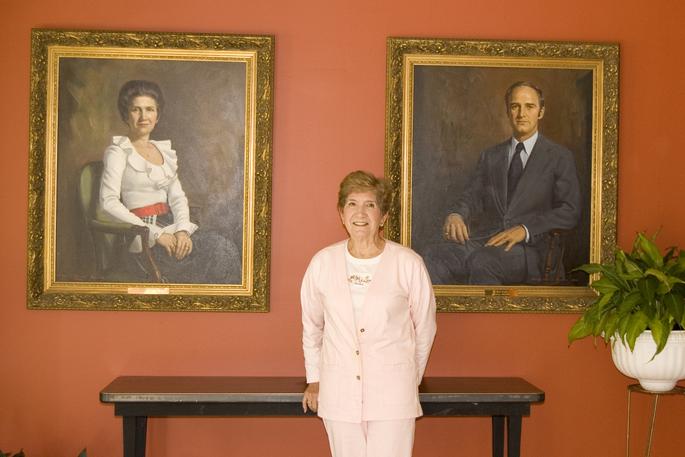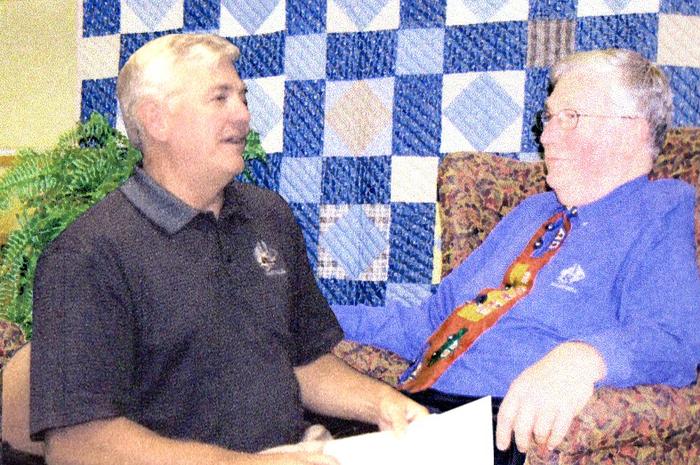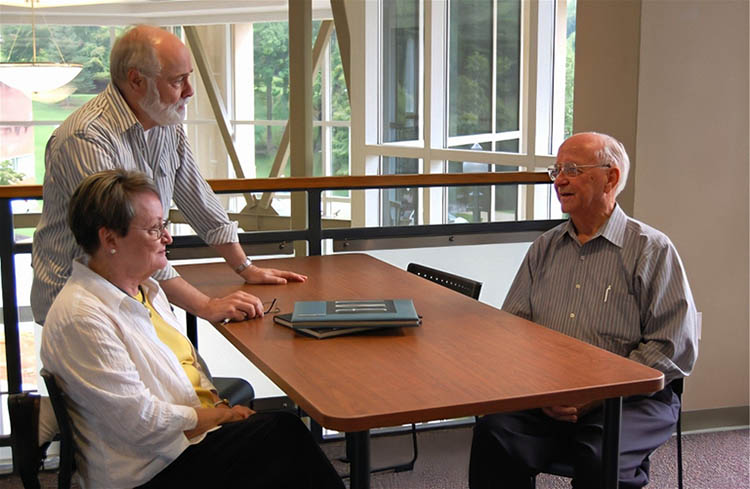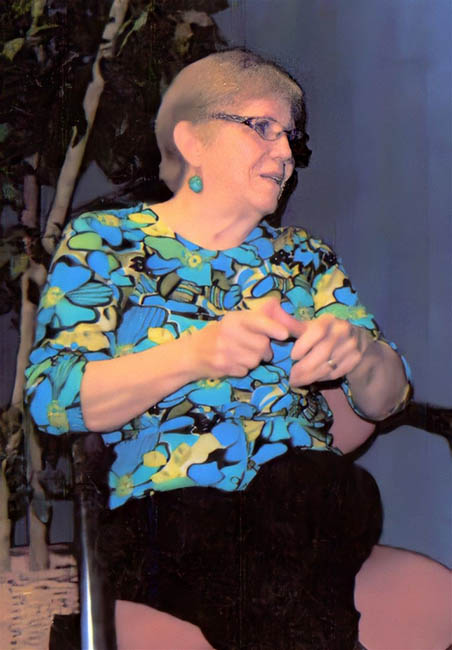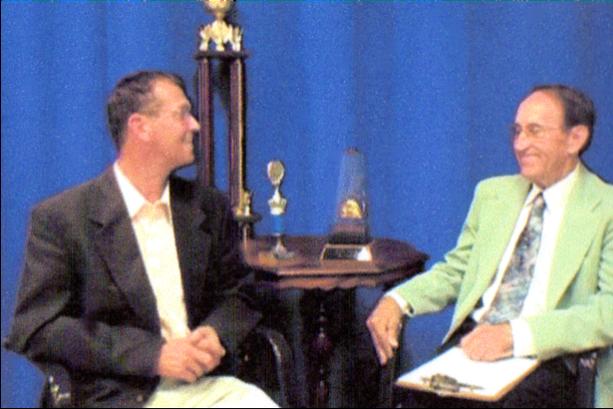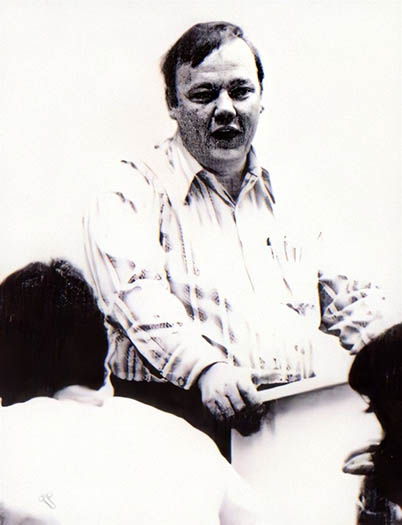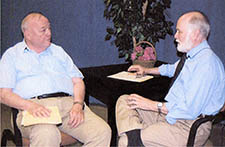Delightful, Daunting, and Demanding
Making The Memories Collection Happen
by C. Robert Jones
When the idea for The Memories Collection hatched itself into reality, I knew what I thought it should be as a finished product, but I could never have foreseen the journey as it unfolded. There was no budget, no staff, no supplies, no office. In short, it was just the two of us: Kristie Hollifield and me. Fifi De Groot, President Dan Lunsford’s Associate and also Director of Alumni Affairs, kindly found nickels and dimes out of various “unknown” places to help us buy supplies. She also arranged with Deana Holland (Director of Human Resources—and Kristie’s supervisor) to free up some of Kristie’s time to take on this new enterprise. So, like Mickey and Judy, we were off and running. Tonight, a red barn. Tomorrow, Broadway!
From the beginning, I felt the interviews should provide not only historical context, but also give the personal side of what it was like to be a part of Mars Hill University. History books are often dry. Except for letters and occasional remembered quotes, real “voices” can be elusive. What’s better than having the real person talking in real time?
The project grew out of an actual circumstance. I realized at the retirement of Miss Frances Snelson that nobody had done a video interview with her . . . and she had been Assistant to three of the four presidents of the 20th century: Dr. Robert Lee Moore, Dr. Hoyt Blackwell, and Dr. Fred Bentley—their tenures covering 99 years (1897-1996).
I mentioned it to both Dr. Bentley and Dr. A. Max Lennon who succeeded Dr. Bentley in 1996, but somehow a recording never got done. When Miss Snelson died in 2002, I was reminded of the old African proverb: “When an old man dies, a library burns.” Miss Snelson’s wonderful “library” of Mars Hill College’s history had slipped away. That became the guiding force for The Memories Collection as a part of Dr. Lunsford’s commission to the Towards 2056 Committee to assure a sturdy, ongoing preservation of the history of the Institution.
The first interview, in the summer of 2008, was with Dr. Doug Gordon of the Music Department. He was leaving MHC to teach at his old alma mater in Alabama, and I felt it essential to get the story only he could tell about what had happened in music theory studies at MHU—just during the time he’d been a professor in Mars Hill. I asked Dr. Julie Fortney, who was Chair of Vocal Studies, and Doug’s colleague, to conduct the interview. Matching interviewees with interviewers became a tricky aspect of the project as it moved forward. Knowing the interviewee and the questions to ask are at the crux of making these work.
The interview was conducted in the Music Lab on the lower level of Nash Hall, a lab Doug had created, literally as technology evolved. He had gone from teaching music theory via a chalkboard to computers as they grew in sophistication—almost in Rube Goldberg fashion. His discussion of how all that happened was animated and punctuated with wonderful stories, a delightful one revealing just how he taught the concept of augmented sixths by using orange road cones. It was a terrific beginning to the series.
The interviews took on a kind of immediacy, a sense of “You are there!” Hearing Robert Chapman, Walter Smith, and Darryl Norton talk about the challenges they encountered as they put together their superb coffee-table book Through the Long Years: Photographic Reminiscences of Mars Hill College was as good as reading an Agatha Christie mystery because of the sleuthing they did to find and verify bits and pieces of University history from “everywhere.” All done, of course, under the watchful eyes of wives Rachel Chapman and Pat Smith (who are featured in their own interviews.)
The series of interviews focusing on the beginnings of Appalachian emphasis at the University by Richard Dillingham, Dr. Don Anderson, Pauline Cheek, Dr. Edwin Cheek, and Dr. Harley Jolley (all of whom were heavily involved) are instructive and fascinating. Those interviews also include discussions about establishing the Southern Appalachian Center (that would evolve into the Liston B. Ramsey Center) and the Center’s sponsorship of the Appalachian Room, the Rural Life Museum, Regional Studies, the Lunsford Festival, the Bailey Mountain Cloggers, the genesis of the Southern Appalachian Repertory Theatre (SART), and the Appalachian Consortium.
The history of the Department of Education is delightfully told by Dr. John Hough who was there at the beginning. He and Ray Rapp, in separate interviews, also talk about the COP, CEP, and ACCESS (primarily off-campus Education programs) and the groundwork done for setting up the first graduate degree at MHU. And for many who’ve heard the story of Miss Snelson’s sending John and Dr. Richard Hoffman to a funeral to represent the University—and of their attending the wrong funeral—well, it’s on the record, to laugh at again.
Nancy Fosson’s discussion of how Elderhostel (later Road Scholar) worked on campus in its glory days is full of wonderful anecdotes, and of the enthusiastic seniors who loved their visits at MHU and its environs. (Nancy will always have my undying devotion. As we finished her interview, Kristie announced that there had been no recorded sound. Without a beat, Nancy agreed to do the interview again—right there and right then. And she was just as charming for the second hour and eight minutes as she had been the first go-round.)
Sue Fitzgerald’s story of the Center for Christian Ministries which she directed from 1975-1996 is inspiring in the exceptional way it “married” town and gown, and in the subtle evolution of how her presence and integrity changed views of many male diehards from the “old school” about the role of women in contemporary Baptist churches.
Two of the most poignant interviews were those conducted by Teresa Buckner with Oralene Graves Simmons, the first African-American student admitted to the University, and Greg Lisenbee’s interview with Charity Ray, the talented artist and Director of the Curriculum Lab which contains the children’s book collection on campus. Their views of Blacks growing up in Mars Hill in a time of segregation are sobering.
Frances Snelson
Pat and Walter Smith, C. Robert Jones, Darryl Norton, Bob and Rachel Chapman
Nancy Fosson and C. Robert Jones
Oralene Graves Simmons
Charity Ray
The Southern Appalachian Repertory Theatre (SART) story and genesis is remembered with gusto by founder James W. Thomas, Dr. Earl Leininger (who was the first actor to speak/sing in the first production, The Fantasticks, in 1975), and Bill Gregg, the Production Stage Manager that first season and successor to Jim in 2000. Likewise, there is an interview with architect John Rogers who was involved in the designs of eight buildings on campus. And an engaging video of Appalachian treasure, Betty Smith—folk singer, author, teacher, historian, and recipient of a Doctor of Humane Letters in 2008 from MHU. And she ends the interview with a song.
The living Deans/Vice-Presidents for Academic Affairs/Provosts, 1980s-2020, are interviewed: Dr. Donald Schmeltekopf, Dr. Earl Leininger, Dr. Robert Knott, Dr. Nina Pollard, Dr. John Wells, Dr. Carol Boggess, and Dr. John Omachonu.
And a wide-ranging interview with Jeanne Threatt Hoffman, widow of Dr. Richard Hoffman, in their home in Mars Hill, discusses Dr. Hoffman’s legacy from a personal/family viewpoint.
Presidents Dr. A. Max Lennon, Dr. Dan Lunsford, and Terry Floyd have engaged in thoughtful views of their terms in office. Indeed, Dr. and Mrs. Lennon (in a joint interview) may have provided the only recorded assessment of his five years (1996-2001) as president.
First ladies Doris Bentley and Beverly Lunsford are “on tour” in their interviews. Doris, who was a student on campus at the time of the University’s Centennial in 1956, gave the commencement address at the time of its Sesquicentennial fifty years later. Standing in front of the beautifully-carved doors her husband created for Broyhill Chapel, she laughs about the dust “all over Edgewood” (their home in Mars Hill) while he was busy at work.
Beverly Lunsford’s two interviews are conducted in the Carter-Humphrey Guest House and in its Dependency whose redesign and refurbishing she oversaw.
Betty Smith
Jim Lenburg (seated right) interviews Bob Knott and Earl Leininger (standing)
Beverly Lunsford at the Carter – Humphrey Guest House
Ruth and Max Lennon being interviewed by Bob Melvin
Doris Bentley in front of portraits of herself and her husband, Dr. Fred Bentley, in Bentley Fellowship Hall
Two of the funniest interviews in the series are those conducted by JoAnne Alexander (also interviewed in her role as the first female Board Chairman of MHU Trustees) of Coach Virginia Hart and John Hough’s interview of David Riggins, Head Basketball Coach and Athletic Director. Dr. Hart’s and David’s stories about their first visits to Mars Hill are hilarious—as is Virginia’s discovery that the interview is a “video”—not an audio . . . and she has shown up wearing a shirt that says “Go Clemson!”
Almost all of the interviews went places in their unfolding that were unexpected—in subject matter, tone, and in defining relationships with Mars Hill University. Two of the most poignant interviews were those by Dr. Susan Kiser of Emmett Sams, her mentor and professor, which happened on the day before his wife’s death after an illness, and Richard Dillingham’s interview with former Coach and Physical Plant Director, Jim Fish. Both were somber for reasons relating to their wives.
Virginia Hart and JoAnne Alexander
Emmett had links to all four MHU presidents of the 20th Century and was the first recipient of the Robert S. Gibbes, Sr. Distinguished Teacher Award and also a posthumous recipient of a Doctorate from the University. Jim’s remembrances of his wife Gwyndola, the popular and dynamic Spanish professor and faculty leader who was killed in a freak highway accident several years earlier, are tinged with sadness as he outlines her fine career on campus—and as he remembers with some rue his occasionally-fractious relationship with Dr. Bentley.
Among the widest-ranging interviews were those with people in the fine arts. Two Alumni-of-the-Year designees—Mark Cabaniss and Charles Tomlinson—spoke of the continuing influence of MHU in their lives and their unbroken ties with the University after graduation. And they delineated what campus life was like during their sojourns. Mark, a current Trustee and early advisor to the format of the Mars Hill Magazine, is a composer/playwright and owns his own music publishing company in Nashville. Charles is an internationally-known set and costume designer for theatre, TV, opera, and most notably the José Limon Dance Company.
Professor Donna Robertson, composer and long-time University organist, talks with Julie Fortney about the music scene on campus under presidents Blackwell and Bentley and reminisces about the artwork of her late husband, artist Joe Chris Robertson who headed the Art Department.
Greg Lisenbee’s interview with Lura Edsall chronicles the history of the short-lived Modern Dance Company on campus, while Richard Dillingham’s interview with Jay Ledford, former choreographer of the Bailey Mountain Cloggers, covers the history of the Cloggers and their beginnings under Dr. Don Anderson and Dillingham, himself.
And finally an interview with The Imperials, the MHC 1960’s Band, including Carroll Aldridge, Bill Brown, David Buddin, Bob Drake, Jay Flippin, Bill McNeil, Don Peach, Bob Suttenfield, and Carlton Wilkes. They discuss how they met on campus nearly 50 years ago and how they still get together to jam and perform after all that time.
The interview with Ellen Coomer, former Director of Medical Services, traces the background of the Infirmary on campus and the life and contributions of former Trustee Chair and Infirmary Director, Dr. W. Otis Duck.
In his interview, Gerald Ball, Retired Director of Information Technology Services, gives a very comprehensive history of communications on campus—from one telephone on a hall and typewriters everywhere to today’s more sophisticated system of cell phones and ubiquitous computers. It’s a fascinating progress.
In her interview, Lora Coomer does a similar thing with the historical process from many mimeograph and spirit duplicators to the central printing of Paw Prints.
In the sciences, three interviews with faculty biologists, Dr. JoAnn Croom, Dr. Scott Pearson, and a joint interview with Drs. Frank Quick and Bill Hutt are among the most comprehensive in describing the work, history, and scope of any Department on campus. Similar are the interviews with Winona Bierbaum, Brenda Russell, and Rebecca Cody in the Department of Home Economics which morphed to the Department of Apparel and Interior Merchandising and then to Fashion Marketing. All chronicle changing times in fields of study and how MHU has dealt with those. In addition, Dr. Pearson’s discussions of The Ferguson Science Building and the re-designed Wall Science Building are valuable for their historic perspectives.
Interviews with long-time staff members have been one of the joyous aspects of this project. Often their view of things is from “backstage,” and there is very little illusion as to how things really work. Folks like Evelyn Anderson (Payroll/Business), Karen Hedrick (Advancement), and Sylvia Murphey (Education/Assistant to John Hough) speak with great affection about their specific jobs, particularly as they related to the essential day-to-day functioning of a large, complex institution.
I was delighted to get two elusive subjects to sit down for interviews. Miss Ruth Anderson, granddaughter of MHC President, John Robert Sams (1871-1872), chatted enthusiastically with Richard Dillingham about her family’s history and involvement with the College—in her home, the large house that sits off to the right of Route 213 as one approaches the stoplight at Main Street. The other interview which took me some time to arrange was with Dr. Noel Kinnamon, the University’s internationally-known Renaissance and Medieval scholar. He turned me down several times. Finally, I got Dr. Carol Boggess, his colleague in the English Department, to help persuade him. Their interview together is a treasure, especially in light of his unexpected death not long afterwards.
And finally two interviews, among many others, which are exceptionally thoughtful and which illuminate the depth of the series. In the first, former campus minister Paula Clayton Dempsey discusses her work on campus, her complex inter-relationship with the NC Baptist State Convention, and the difficulties of being a woman, a minister, and a progressive, especially in certain quarters of contemporary society.
In the second, Professor Robert Kramer (Herr Kramer, as he was fondly known), the German professor who also was a coach, a teacher of several film courses, a sometime actor in Owen Theatre, and an avid traveler, is among the most delightful of all the sessions. Bob discusses the issue of censorship on campus, the brouhaha over required chapel attendance, and his inadvertent permitting of the first dancing on campus. Delightful stories all.
Between 1974-2005, Bob was the driving force of the Visiting Artists and Lectures Committee. His skill in negotiating contracts was legendary. In the interview, he tells that he was able to bring the superb 90-piece Symphony Orchestra of Sofia, Bulgaria to campus for $3,500. Their usual asking fee per performance was between $40,000-$50,000. (Bob’s total annual budgets were only $15,000-$20,000.)
He brought to Mars Hill the leading performers of the day: orchestras, concert pianists, Broadway shows, the Chinese Acrobats, the Vienna Boys Choir, the noted ballet companies, the singers, jazz musicians, and on and on. In western North Carolina, there was no other performance series quite like it—not even in Asheville.
The agents with whom he dealt said that the six acts he brought to the campus each year comprised an arts series that was among the best in the nation.
MHU students and locals had a ringside seat to shows that ordinarily would have been available only in major cities.
As Bob neared retirement in 2009 after 45 years of teaching, the series was discontinued. A great loss for the University and community at large.
David Riggins and John Hough
Susan Kiser in her interview with Emmett Sams
Donna Robertson and Julie Fortney
Ellen Coomer
Jay Ledford and Richard Dillingham
Bob Kramer
Bob Kramer and C. Robert Jones
When I inquired which act of all in thirty years had been the most memorable for him, he replied without hesitation: “Lionel Hampton.” When I asked why, he smiled, then recalled that when Hampton arrived, there seemed to be no possibility that “this old man” could possibly be up to giving a performance. The famous vibraphonist and pianist who in his 94 years had played with the likes of Louis Armstrong, Benny Goodman, and Charlie Parker, was clearly past his prime. Bob said at eight o’clock when the curtains opened, out stepped a vibrant twenty-five- years-younger performer who gave a dazzling show. He couldn’t believe it.
Since the series began in 2008, twenty-two of the 119 interviewees have died. I’m enormously grateful that their stories and lives have been documented and will live on via these DVDs for future generations. If the 100 interviews of The Memories Collection (so far) were played end to end, it would take the better part of a week to see them all.
I suspect the resulting mosaic, with its many pieces, would present a vibrant, living tapestry of what Mars Hill University is, from all kinds of views. And that has been the goal of the project. I hope that Phase 2 and those that follow will make it even richer.
Written 4/1/2021
